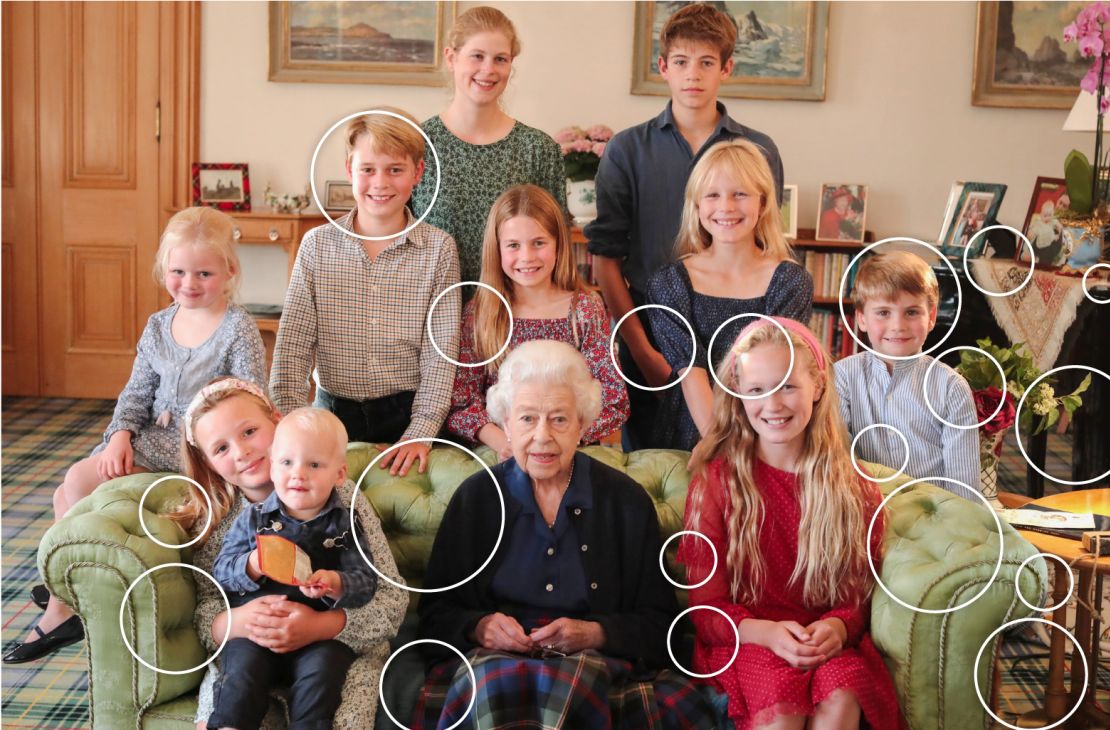Editor’s Note: Laura Beers is a professor of history at American University. She is the author of several books on British culture and politics, including the upcoming “Orwell’s Ghosts,” on the continuing relevance of George Orwell’s writing to the 21st century. The views expressed here are her own. Read more opinion on CNN.
CNN
—
The already off-the-rails Princess of Wales controversy has veered off in an unexpected direction. In recent days, the debate has shifted from wild speculation over the princess’s whereabouts to a moral panic about the British royal family’s apparent history of doctoring photos presented to the public as candids.
The photo-doctoring controversy has provided a pretext for more legitimate media outlets, including this one, to weigh in on the great Kate debate, but it’s hard to shake the feeling that it is just that — a pretext.
So, Kate touches up her photos. Who doesn’t these days? The real underlying issue is whether it is legitimate for the royal family to assert a right to privacy and to keep crucial details about the princess’s health from the public.
The palace’s view meanwhile is that family members should have some level of medical privacy despite their positions as public servants.
But briefly, let us recap how we got here. Kate has not made an official public appearance since Christmas Day, shortly before entering hospital to undergo “planned abdominal surgery” — recovery from which would require her to abstain from public duties through Easter.
After weeks of speculation about the princess’s health and whereabouts, on March 10 the palace released a purportedly candid photo of the princess and her three children, said to have been taken by Prince William, in honor of Mothering Sunday, the British equivalent of US Mother’s Day. But the candid photo, it turned out, wasn’t so candid after all.
Shortly after, the key press agencies Reuters, Getty and the Associated Press pulled the photo from their systems and issued statements to the effect that it did not meet journalistic standards of truthful representation.
The princess later apologized for the confusion around the photograph and confessed that occasionally she likes to “experiment with editing.”
Then, on Tuesday, the international photo agency Getty announced that they had determined that a 2023 photograph of the late Queen Elizabeth II surrounded by her grandchildren and great-grandchildren, taken by Kate, had been digitally enhanced at source.

All of which has prompted extensive media debate about the history and legitimacy of royal image alteration, including a lengthy piece in Vogue, ironically a publication known for doctoring its own photographs.
It is fair to say that Kate has history on her side. The royals’ long history of embellishment in portraiture even got a nod in the rock musical “Six,” in which Henry VIII’s fourth wife Anne of Cleves sings “Ich bin Anna of Cleves — when he saw my portrait he was like Ja! But I didn’t look as good as I did in my pic.” It’s a reference to the purportedly disingenuous 1530s Hans Holbein portrait that allegedly convinced Henry to propose to the German princess.
Most people, whether or not they are royals, assume that portraits — even ostensibly candid portraits like the Mothering Sunday photograph — should present the best version of themselves, if not a better than best version.
The ubiquity of photo editing on social media is why we have the hashtag #nofilter, used to brag that a picture was legitimately so impressive as not to need any kind of digital manipulation.
But you needn’t look online to find examples. I will admit to having a doctored picture of my husband’s extended family atop my piano. My brother-in-law photoshopped together several iterations to get an image in which everyone was smiling with their eyes open. And tomorrow my son has his first-grade school picture — the school sent home an order form with an option to pay extra to have your child’s photo professionally retouched.
So the pretended outrage around Kate’s embellished photos has a whiff of Capt. Renault in “Casablanca” claiming that he is “shocked, shocked to find that gambling is going on” in Rick’s Café… before shamelessly pocketing his winnings.
If most people are not at heart either surprised or particularly bothered to learn that official royal photographs are not unvarnished documentary evidence, then why has this story generated so much interest?
The Daily Mail columnist Richard Kay argued last week that the real issue was one of trust: “Trust and integrity are precious commodities. The public adore the royals, but that adoration rests on being told the truth.” Leaving aside the question of whether the British public “adore” the royals, the British people do feel a certain entitlement over them, an entitlement that goes beyond the belief that they should not be deceived.
In exchange for their state-supported privilege, most Britons feel entitled to a level of access to the royal family that is incompatible with Kate’s nearly three-month mystery seclusion.
More than 150 years ago, the man who would be future prime minister, Lord Salisbury, made the same point when Queen Victoria temporarily withdrew from public life following the death of her husband Prince Albert. “Seclusion is one of the few luxuries in which royal personages may not indulge … loyalty needs a life of almost unintermitted publicity to sustain it.” Or, as the motto famously attributed to Queen Elizabeth II goes: “I have to be seen to be believed.”
It’s a mantra that King Charles III appears to have taken to heart. In contrast to the princess, he allowed himself to be photographed leaving the London Clinic on January 29, after receiving treatment for an enlarged prostate, whereas Kate’s departure from the same hospital that same day went unrecorded.
As head of state, he needs to be seen out and about. When it was clear his health condition would affect his abilities to perform his public-facing duties, the King was quick to inform the public that cancer had been detected during the prostate procedure and that he would be receiving treatment.
While it is easy to understand the princess’s desire for privacy during what is doubtless a difficult time,the length of her time away feels incompatible with her position as a “working royal.”
Get Our Free Weekly Newsletter
Kate still hasn’t been seen in public for any official engagements, but she was spotted at a farm shop near her home with husband Prince William on Saturday, easing some questions around her health.
Like the King and Queen Camilla, the Prince and Princess of Wales and the other seven “working royals” are meant to serve the country publicly for which they are paid by British taxpayers from the sovereign grant, currently upwards of around £86 million ($109 million) a year. Public appearances are arguably their raison d’etre.
The royal family, like everyone else, should be entitled to a period of paid sick leave. But just as most of us cannot disappear from work for months on end without sufficient explanation, some British people feel a legitimate right to ask the Windsors to be more forthcoming about Kate’s condition.
Credit: Source link




